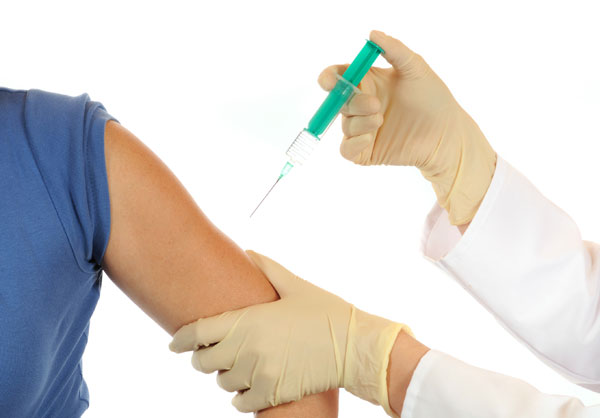Kids' Vaccine Rates Have Room to Improve, CDC Says

For the most part, U.S. kindergartners are up-to-date with their vaccines, but there remains room for improvement, according to a new report from the Centers for Disease Control and Prevention (CDC).
Among kindergarteners in 2011, vaccine coverage was 95 percent or higher for the polio, hepatitis B, and the diphtheria, tetanus and pertussis (DTaP) vaccines — a level that meets national goals.
However, the percentages of kindergarteners who had received the measles, mumps and rubella (MMR) vaccine, and the chicken pox vaccine were slightly less than 95 percent, and so did not quite meet national goals.
Although most states met or came close to vaccine coverage goals, "locally low vaccination coverage for extremely transmissible diseases such as measles remains a threat to health," the report said. Measles is caused by a highly contagious virus. Infections can lead to serious complications, and one to two out of 1,000 infected children die of the disease, according to the CDC.
Because cases of unvaccinated children may cluster together, "there might be smaller areas and schools where low levels of immunization could sustain ongoing measles transmission," the report says.
In the years between 2001 and 2010, there were 37 to 140 yearly cases of measles in the U.S. In 2011, the number rose to 222 cases, and 86 percent of infections occurred in people who weren't vaccinated, or didn't know their vaccination status, according to a CDC report earlier this year.
The CDC urged parents to give their children the best protection against vaccine-preventable diseases like measles by ensuring that children are vaccinated according to the recommended immunization schedule before starting school this fall. [See Back-to-School Vaccinations: A How-To Guide.]
Sign up for the Live Science daily newsletter now
Get the world’s most fascinating discoveries delivered straight to your inbox.
The new report reviewed vaccine coverage levels in 47 states and the District of Columbia. Vaccine coverage for MMR ranged from 86.8 percent in Colorado to 99.3 percent in Texas, and states in the middle had a coverage level of 94.8 percent.
Vaccine coverage for chicken pox ranged from 84.0 percent in Colorado to 99.2 percent in Mississippi and Texas, and states in the middle had a coverage level of 93.2 percent.
The percent of children who were exempt from one or more vaccines for either medical, religious or philosophical reasons ranged from less than 0.1 percent in Mississippi to 7 percent in Alaska, and the most common exemption rate was 1.5 percent.
Researchers should investigate measles coverage at the local level "to ensure that the appropriate population protection for measles is maintained at each school to protect school children, their families, and the community," the report says.
The report will be published tomorrow in the CDC's Morbidity and Mortality Weekly Report.
Pass it on: For the best protection against vaccine-preventable diseases, the CDC recommends kids are up-to-date with their vaccines before they start school this fall.
This story was provided by MyHealthNewsDaily, a sister site to LiveScience. Follow MyHealthNewsDaily on Twitter @MyHealth_MHND. We're also on Facebook & Google+.
Measles has long-term health consequences for kids. Vaccines can prevent all of them.
100% fatal brain disease strikes 3 people in Oregon










